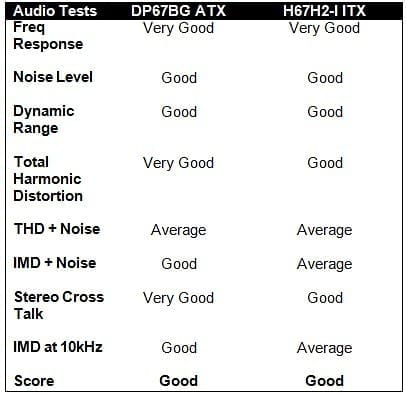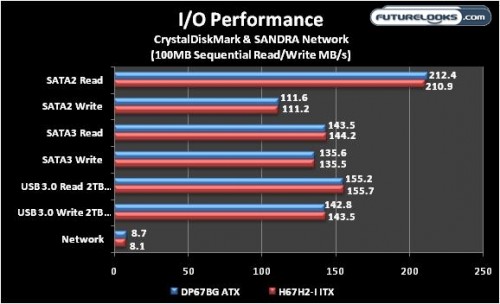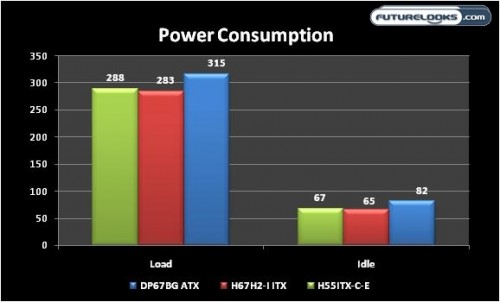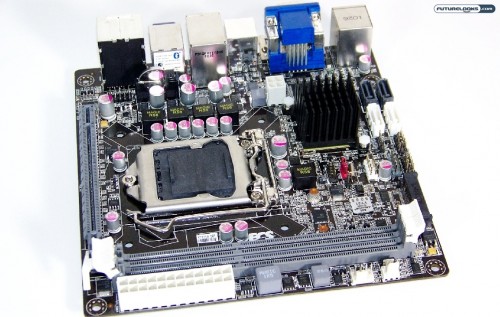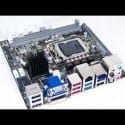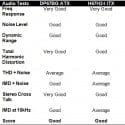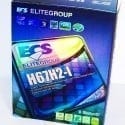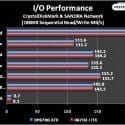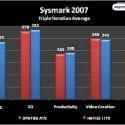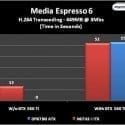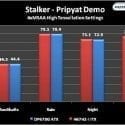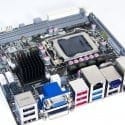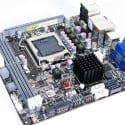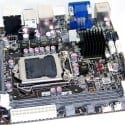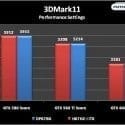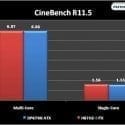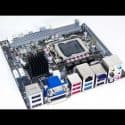RightMark Audio Analyzer
Since there isn’t any way to add an audio card to this ITX board, I tend to give audio performance a bit more scrutiny. These little boards really need to work hard to get around the tight packing of circuits on such little real estate. A problem a full sized board doesn’t have.
Audio implementation proved to be pretty standard, but as expected, the tight packing of components does limit performance somewhat. Overall, audio is clear and reasonable as far as integrated audio goes. It isn’t the most voluminous throughout the entire range in terms of gaming and movies, but will get the job done. It just won’t bring you a high of a quality experience when pushed to the edge. Still, the overall score is “Good” compared to the ATX board which gets a similar overall score.
Input/Output Performance – CrystalDiskMark and SANDRA
Expansion and data port testing was very similar. Suffice it to say, USB 2.0 performance was basically identical and were omitted given its common performance characteristics across almost any platform. But, having SATA 6Gbps and USB 3.0 support is a huge benefit especially if you’re using the platform in a home theater capacity. USB 3.0 will make quick work of moving large movie files around. Both boards are comparable.
Quality Control and Power Consumption
You would think that larger ATX motherboards are harder to build than ITX motherboards. However, this is not really the case. Because there is less real estate (PCB) to spread things out upon, traces and components can get a bit cramped which can lead to some performance issues.
The ECS H67H2-I is pretty clean when it comes down to it. There aren’t any noticeable components noises or audio degradation which are two of the most common implementation quirks. It’s a pretty quiet little platform which is evident at full load during audio testing. And, power consumption is quite low on these scalable mini ITX motherboards compared to larger ATX parts.
Final Thoughts
The ECS H67H2-I (Mini-ITX) motherboard is very similar to the now legendary GA-H55N-USB3 by GIGABYTE. It proved that a small board can be configured in to a system that can fill just about any capacity. One could easily add some RAM, CPU, GPU, and hard drive or two for a very sweet media, or home theater PC. It’ll even support high definition content as well as encode and decode your movie files quite quickly thanks to the Sandy Bridge processor’s Quick Sync technology. That’s one huge benefit these H67 boards have over the P55/H55 and P67 chipsets.
As proven in our benchmarks, the ECS can also serve as a very strong mini-gaming system by just adding a capable performance level video card. There’s no reason you can’t enjoy a 1080p high end gaming experience. You can even save space as well.
Overall, the computing experience the H67H2-I offers is quite pleasant. Coupled with the latest expansion and Input/Output ports, it offers a greater experience over the previous generation Intel media chipsets. If we had one wish for these little platforms it would be for both Wi-Fi and a little better audio performance. For a mere $120 USD, it’s an affordable platform that will make any media or video game fan more than happy.
Pros
- Stable, reliable platform
- Bluetooth connectivity and security
- Supports Intel Quick Sync via H67 Chipset
- USB 3.0 and SATA 6Gbps support
- Some overclocking potential
- Price
Cons
- Wi-Fi would be very handy
- Only a standard Realtek audio processor
- Hard to find
Overall Rating: 8.75 / 10.0
Help Us Improve Our Reviews By Leaving a Comment Below!
ECS Elitegroup H67H2-I LGA1155 Mini-ITX Sandy Bridge Motherboard – Photo Gallery


